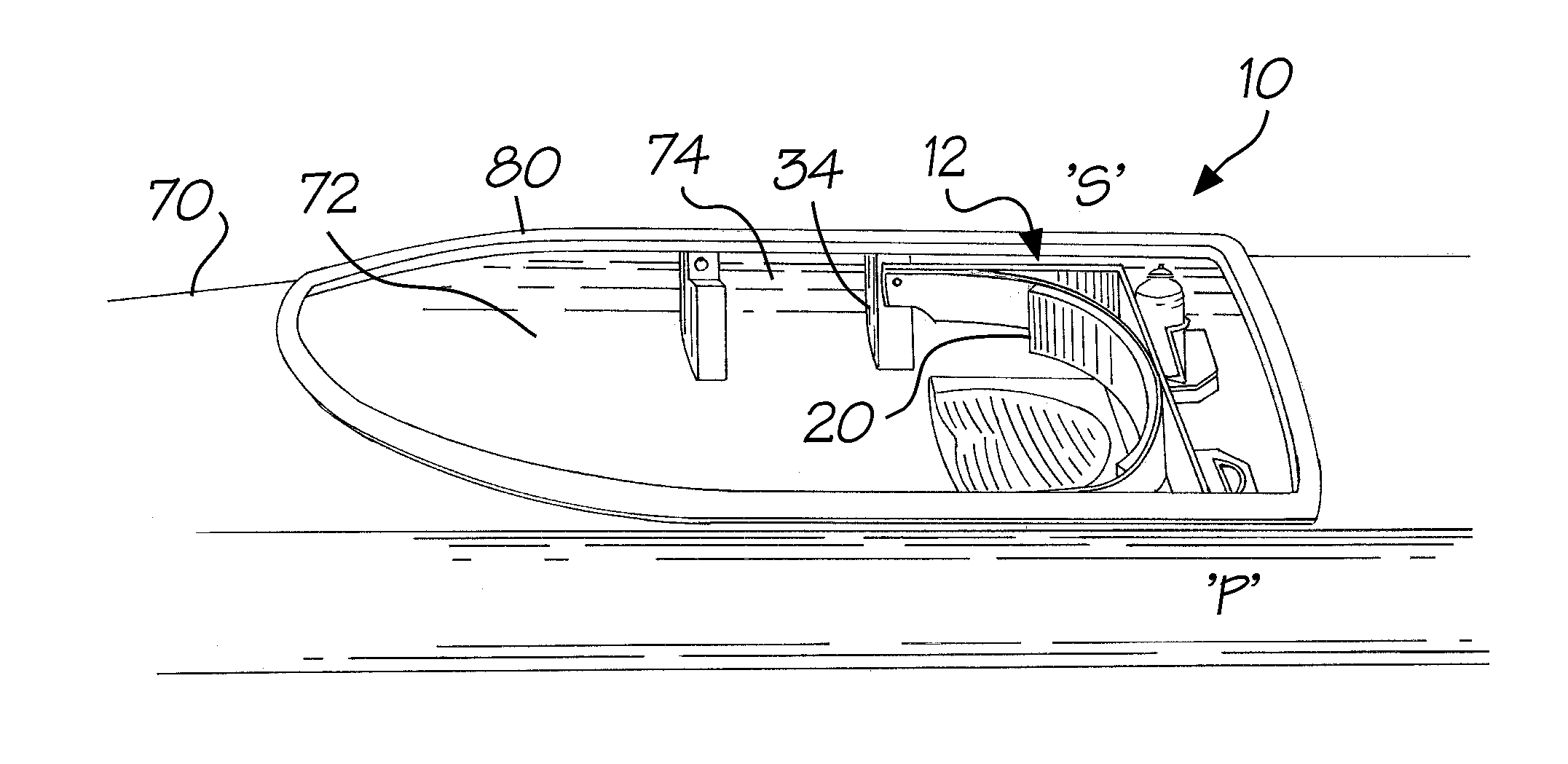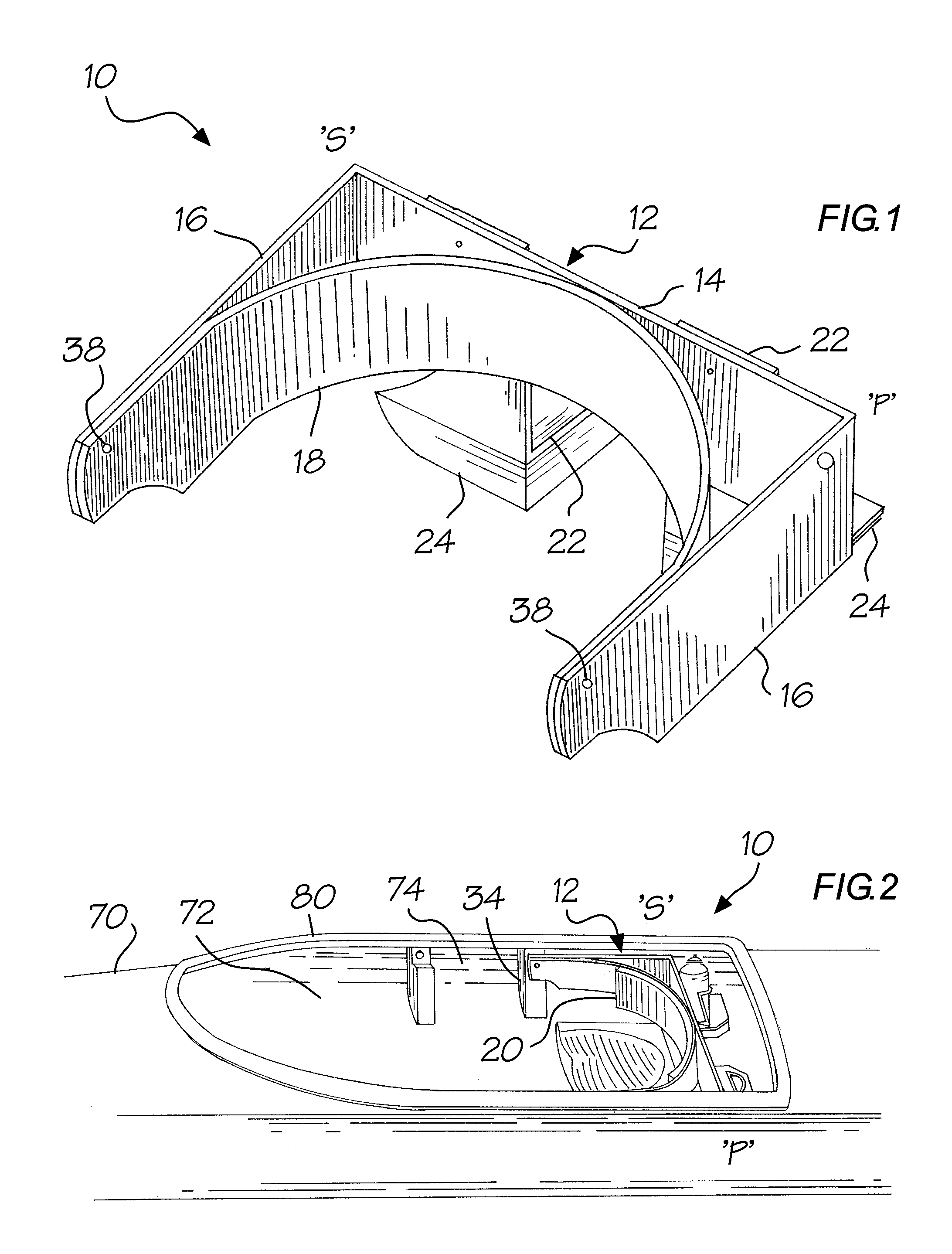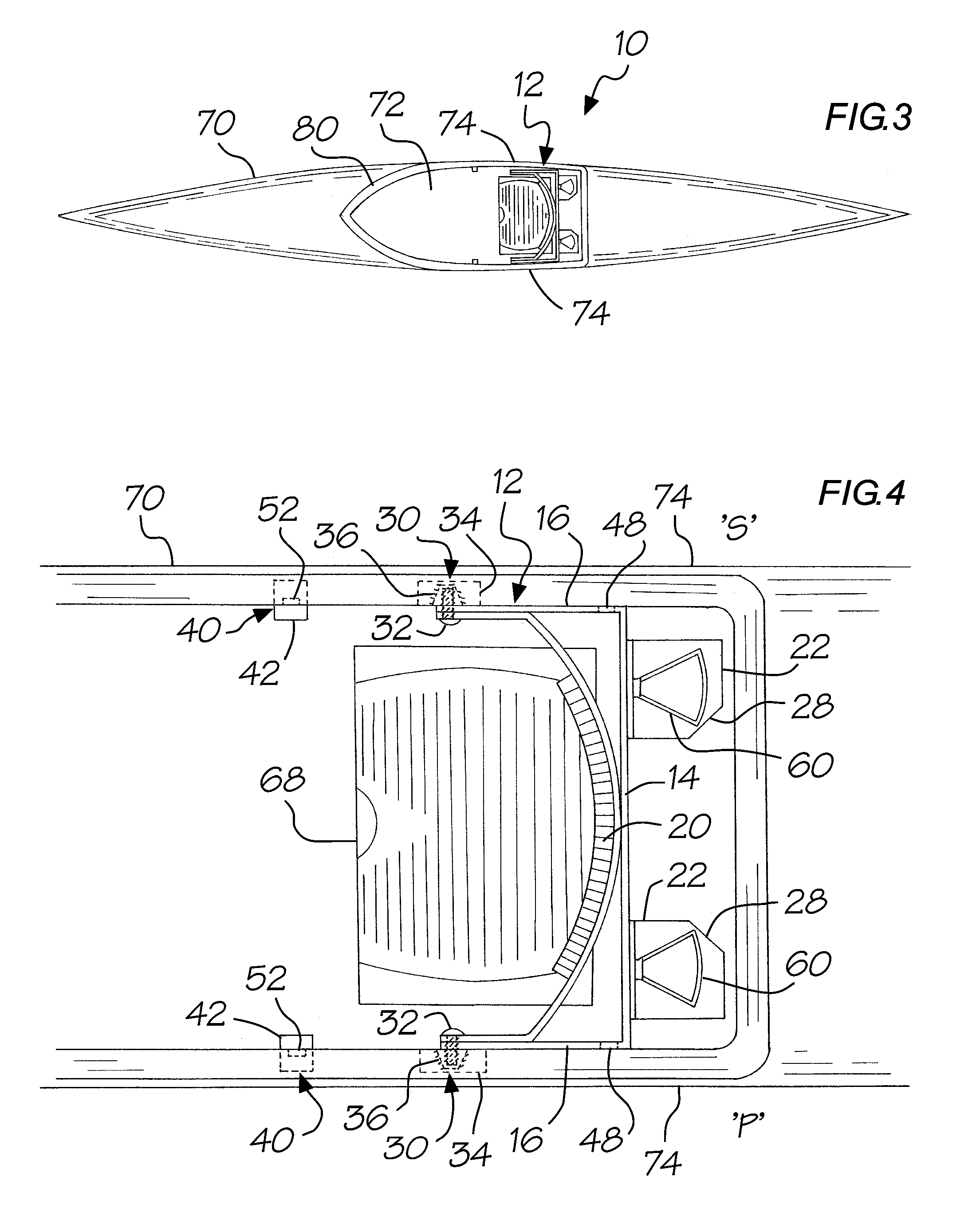Kayak portaging device
a portaging device and kayak technology, applied in the field of kayak portaging devices, can solve the problems of slow and difficult process of kayak portaging and transport, inaccessible solo kayakers, and inability to carry kayaks over long distances, etc., and achieve the effect of quick, comfortable and safe manner
- Summary
- Abstract
- Description
- Claims
- Application Information
AI Technical Summary
Benefits of technology
Problems solved by technology
Method used
Image
Examples
Embodiment Construction
[0037]Reference is made herein to the attached drawings. Like reference numerals are used throughout the various drawings to depict like or similar elements of the claimed portaging device. For the purpose of presenting a brief and clear discussion of the portaging device, the preferred embodiment will be discussed primarily as depicted for use in a kayak. This is for representative purposes only and should not be construed as limiting the adaptation and use of this device in other types of suitable watercraft.
[0038]The preferred embodiment of the kayak portaging device 10 is a u-shaped device which generally includes a yoke frame / backrest assembly 12 as can be seen in FIG. 1, a pivot assembly 30 as can be seen in FIG. 4, a stop / lock assembly 40 as can be seen in FIG. 4, and a pair of bottle holders 60 as can be seen in FIG. 4.
[0039]Referring now to FIG. 1, the yoke frame / backrest assembly 12 is seen as it would appear when in the storage / backrest position, stowed behind the kayak s...
PUM
 Login to View More
Login to View More Abstract
Description
Claims
Application Information
 Login to View More
Login to View More - R&D
- Intellectual Property
- Life Sciences
- Materials
- Tech Scout
- Unparalleled Data Quality
- Higher Quality Content
- 60% Fewer Hallucinations
Browse by: Latest US Patents, China's latest patents, Technical Efficacy Thesaurus, Application Domain, Technology Topic, Popular Technical Reports.
© 2025 PatSnap. All rights reserved.Legal|Privacy policy|Modern Slavery Act Transparency Statement|Sitemap|About US| Contact US: help@patsnap.com



